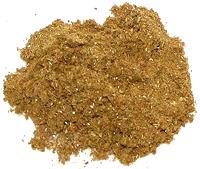
Garam Masala - Bengali
India - Bengal - Garam Masala
Effort:
Sched:
DoAhead:
*
15 min
Yes
|
6 20 40 3 |
in |
Cinnamon (1) Cloves Cardamom pods (2) Bay Leaf (3) |
Make - (15 min)
|
-
Cinnamon:
Use real cinnamon if at all possible (for all Indian recipes). American "cinnamon" is actually cassia bark which is thick, hard and sweeter. Real cinnamon can be found in markets selling Mexican herbs and spices - the bark is very thin. Real cinnamon originated in Ceylon (Sri Lanka), cassia in Southeast Asia. For details see our Cinnamon & Cassia Bark page. - Cardamom Pods, Green: Some cooks shell out the seeds and discard the pods. If using just seeds, freshly shell them out of pods, they degrade rather rapidly after shelling, so commercial seeds may be a bit stale.
-
Bay Leaves:
Note that many recipes for Bengali Garam Masala skip the Bay Leaves. If used, these should actually be Tej Patta, the bay leaf of India, but that is very hard to find in North America. They are larger and have a stronger flavor than Mediterranean bay leaves, and a hint of cassia - but there's already plenty of cinnamon in this recipe. Our bay leaves make a suitable substitute. For details see our Laurels page. - U.S. measure: t=teaspoon, T=Tablespoon, c=cup, qt=quart, oz=ounce, #=pound, cl=clove in=inch, ar="as required tt=to taste
©Andrew Grygus - agryg@clovegarden.com - Linking to and non-commercial use of this page permitted